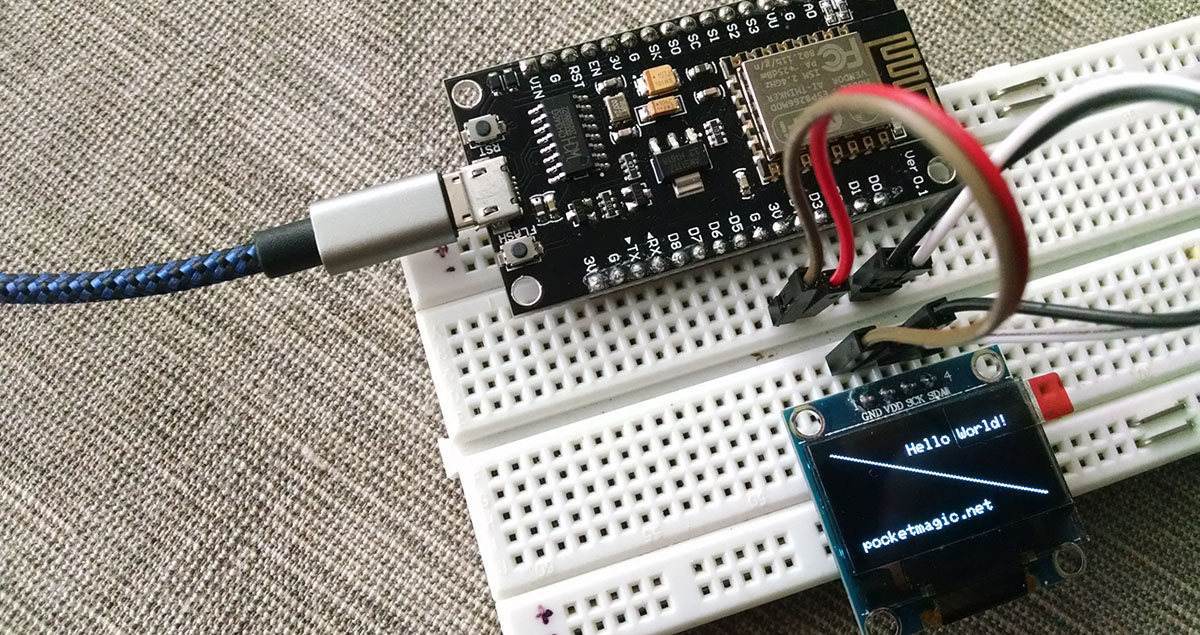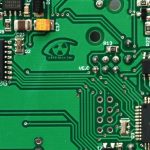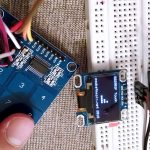Now you can find a plenitude of cheap OLED displays online. One very common model is the 0.96″ 128×64 pixels OLED display, based on the SSD1306. This is a single-chip CMOS OLED/PLED driver with controller for organic / polymer light emitting diode dot-matrix graphic display system.
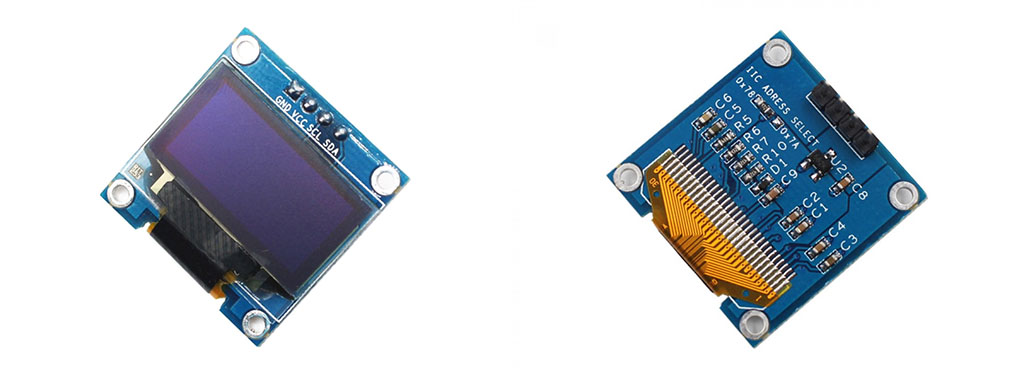
This hardware driver can talk both via I2C and SPI, although the modules you will find are exposing the I2C pins more. This is why I designed the code to communicate via I2C. Changing that to SPI is easy, you just need to change the communication primitives:
void ssd1306_128x64_i2c::writeCommand(uint8_t c) {
Wire.beginTransmission(m_i2caddr);
Wire.write(0x00); // control
Wire.write(c);
Wire.endTransmission();
}
Although there are already many examples and fine libraries readily available, most of them are using a buffer, meaning all the drawing operations are saved to a memory array and them dumped to the LCD as one complete frame. This has certain advantages that I would normally go for, but it also uses a lot of memory, a no go for small microcontrollers. This is why I wanted to write a library that will directly write to the LCD hardware instead of using a buffer. It’s a bit slower but it saves considerable memory!
Using this library is straight forward:
#include
#include
ssd1306_128x64_i2c display;
void setup() {
display.init();
for (int i=0;i<128;i++)
display.drawPixel(i,i/2,1);
display.drawString(0, 7, "pocketmagic.net");
display.drawString(50, 1, "Hello World!");
}
bool invert = 1;
void loop() {
delay(1000);
display.invertDisplay(invert);
invert = !invert;
}
And here are the results:
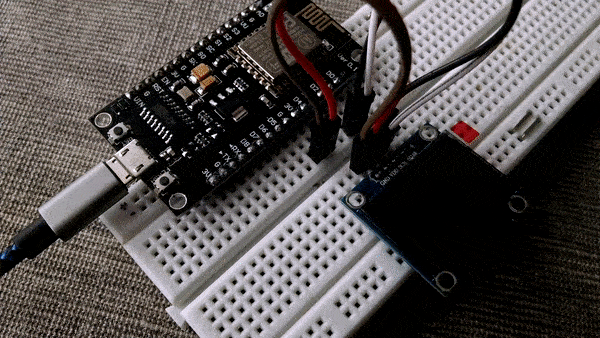
Download the library on Github or here.
